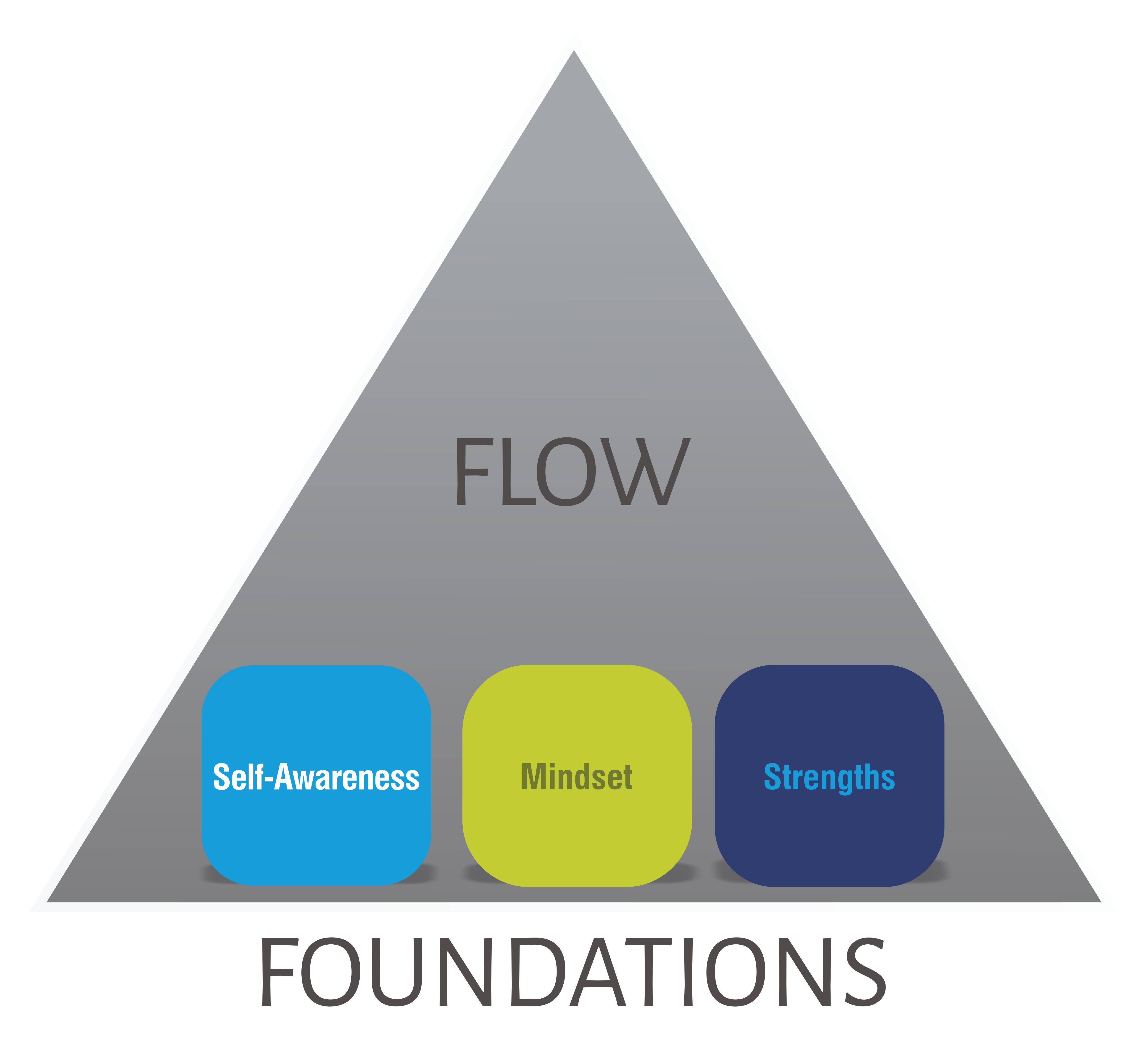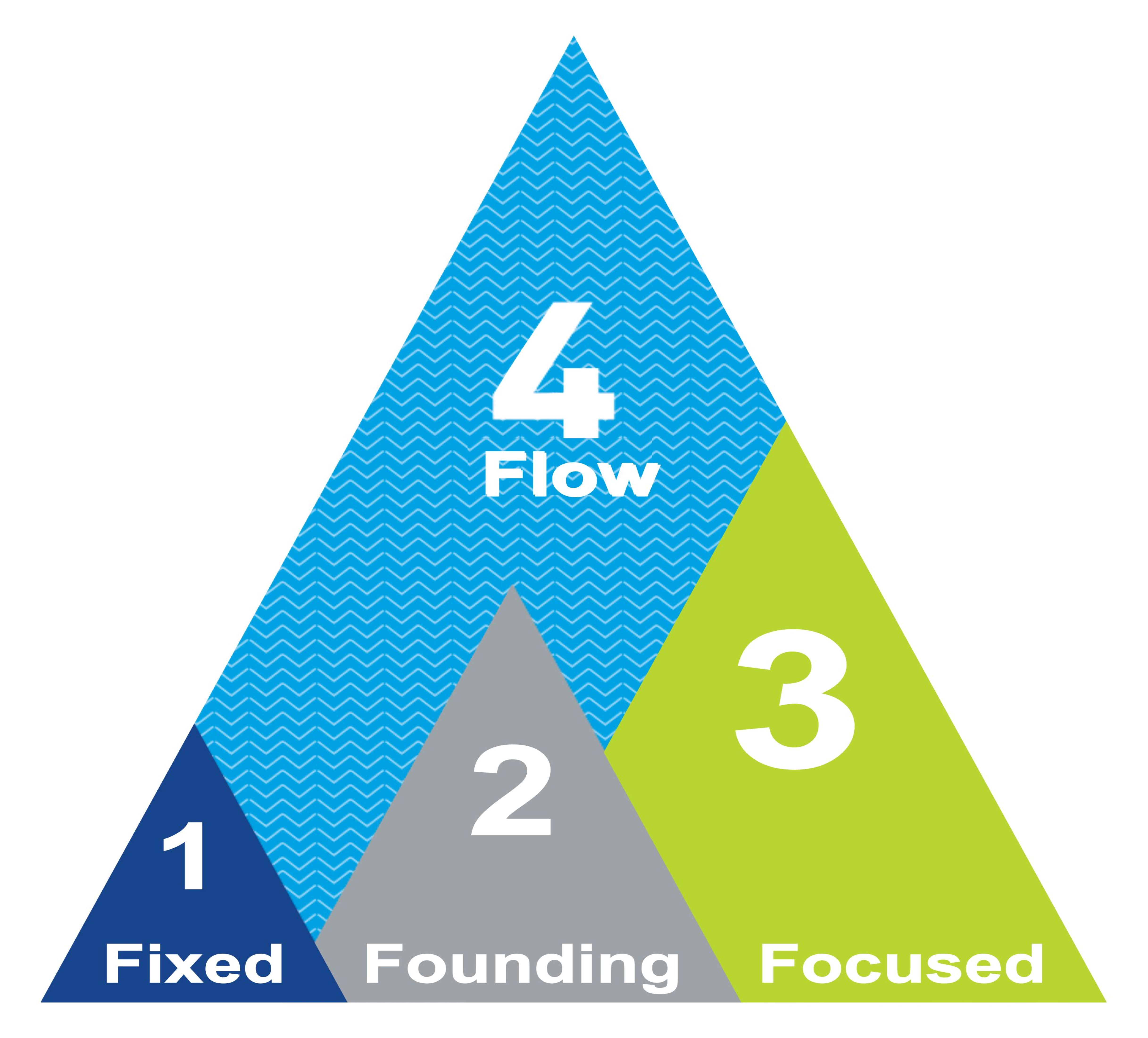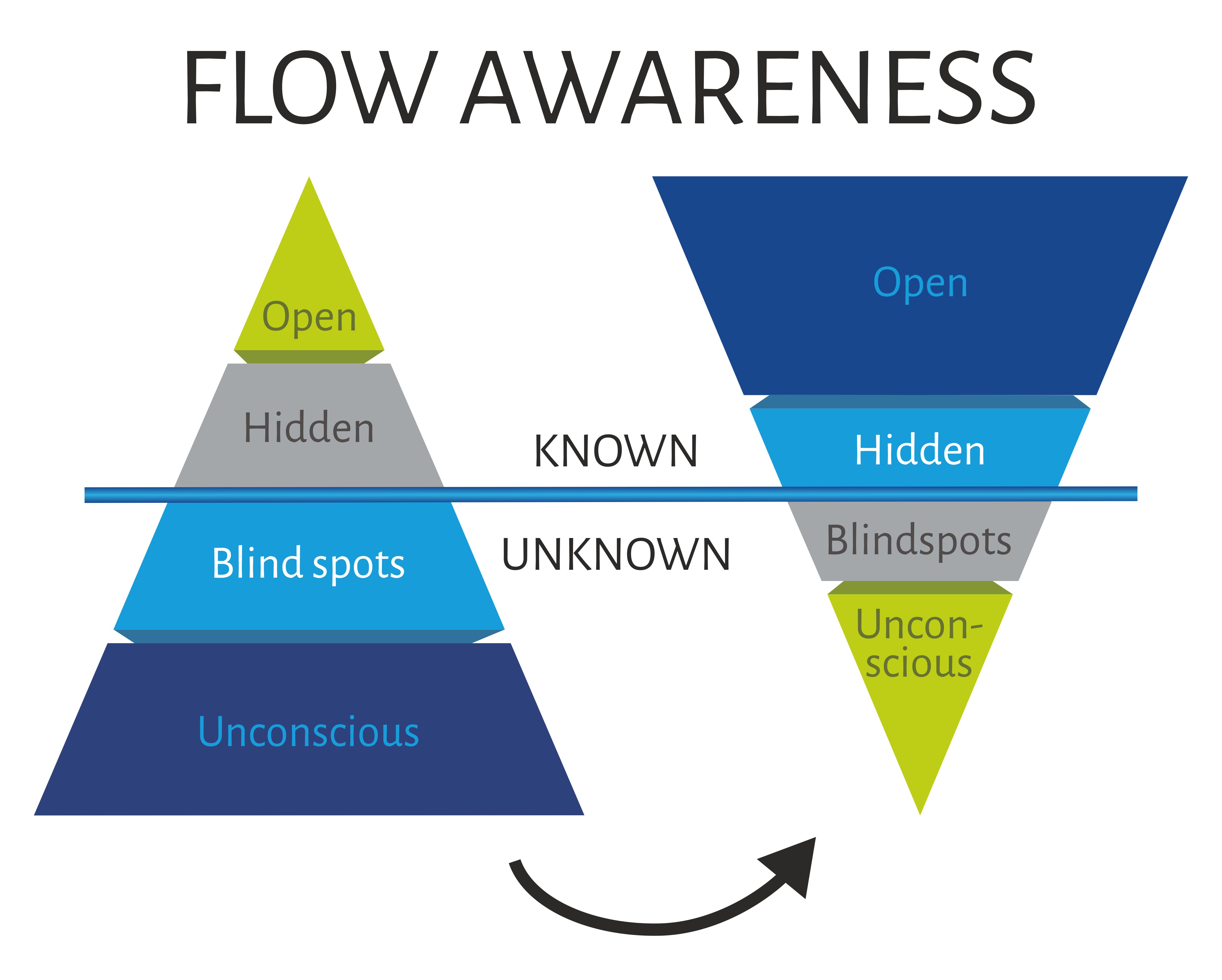
Flow Leadership programs
What is the ideal leadership profile?
Which profile makes for the best leaders?
Which leadership style is considered to be the most successful?
If you’ve been wondering about these questions, you’re not alone – these are my most frequently asked questions in all of my years of leadership coaching, and they’re the ones the Flow leadership development programs will answer for you.
Ultimately, everyone wants to know the ‘ideal’ way to lead. My response, that there is no one profile, type, style or theory that is the ‘ideal’, but any one of them can be the ideal, doesn't really satisfy anyone.
The underlying key messages of all psychometric instruments are essentially the same, regardless of their focus area, whether in leadership capabilities, personality traits, change styles, or interpersonal behavioural interaction needs, to name just a few. Having the self-awareness to understand your own profile and how others differ, and having the skills to adjust your own style to best fit the current context, is the key.
You don’t need to read all of the literature on the various leadership styles, do all of the different psychometric instruments, or become an expert in all of the different models yourself in your search to build your confidence and utilise your own strengths. I developed the Flow Leadership Model to answer exactly that question of the ‘ideal’, so that you can be confident in doing what you do best and having the keys to success.
The Flow leadership development program is designed to provide you with a step by step approach to applying the Flow Leadership Model, so you can learn exactly how to be the most effective and successful leader.

"Katalin distils a career of leadership expertise into an accessible and practical suite of take home actions. Emerging and experienced leaders alike will welcome this fresh viewpoint - especially at a time when the world desperately needs confident, energised leaders, ready to shape a brighter future."
Dr. Bronwyn King AO, MBBS, FRANZCR
CEO Tobacco Free Portfolios
Radiation Oncologist

Flow Foundations

Flow Model

Flow Spectrums

Flow Leadership
Program 1
Flow Foundations
Why Flow?
Flow is considered to be the optimal state of consciousness. A psychological state that, when experienced, brings great satisfaction, enjoyment and success. In this module you will learn how the concept of this optimal or ‘ideal’ state is applied to leadership in order to achieve optimal or ‘ideal’ leadership.
Flow Foundations
The Foundations of the Flow Leadership Model form the essential building blocks necessary to obtain to make progress and achieve ultimate success in effective leadership. As these foundations are the key elements of the Flow Leadership Model and underpin the Flow Spectrums, it is essential to gain an understanding of the Flow Foundations prior to introducing the Flow Model and the Flow Spectrums.
Flow Awareness
Self-awareness is not only a key foundation for the Flow Leadership Model, but it is an absolute foundation of effective leadership. Greater self-awareness equates to higher emotional intelligence, so understanding yourself as well as the impact that you're having on others will increase your ability to build relationships, communicate effectively, build trust, and influence others. Greater self-awareness will also build your confidence in the strengths that you have, knowing exactly what you do well and how to continue doing what you do well, but equally important, knowing how to account for your perceived weaknesses or areas for development.
This module utilises the Flow Awareness tool which aids participants to understand exactly how to develop their self-awareness.
Flow Mindset
The second foundation of the Flow Leadership Model is Mindset. The module highlights how the right mindset is absolutely critical to be effective as a leader. Your mindset needs to be positive; you need to be future-focused and solution-oriented. It's incredibly important that you believe in yourself, that you believe in the direction that you're moving in, and that you believe in the people that you are leading to be able to get the best results for yourself, your organisation, and those you are leading.
The Flow Leadership Mindset is not just about yourself - the way you see the world, the way you think, what you want, what you desire - it's important to open your mind and be open to others to lead effectively.
Flow Strengths
Strengths is the third pillar of the Flow Foundations. Developing the right leadership skills is critical for leadership success.
Many people in today's world have been influenced by the traditional approach of psychology and focus almost entirely on “fixing” what's wrong with them, their problems, their weaknesses and their stresses. Amongst this, they often lose sight of what is good and what is strong in them. I prefer to draw on positive psychology, a more modern approach of focusing on what we do well and how we can develop to be our best. This module focuses on strengths and strengths-based leadership.
Program 2
Flow Model
Fixed
Strengths is the third pillar of the Flow Foundations. Developing the right leadership skills is critical for leadership success.
Many people in today's world have been influenced by the traditional approach of psychology and focus almost entirely on “fixing” what's wrong with them, their problems, their weaknesses and their stresses. Amongst this, they often lose sight of what is good and what is strong in them. I prefer to draw on positive psychology, a more modern approach of focusing on what we do well and how we can develop to be our best. This module focuses on strengths and strengths-based leadership.
Founding
The second state of the Flow Leadership Model is called Founding, where there is an emerging awareness of varying levels of effectiveness and a willingness to explore movement up and down the Flow Spectrums.
This module enables leaders to recognise the current state of the Founding State level two, where the leader is becoming more willing to experiment, to engage in trial and error, and to be more willing to seek and receive feedback from others. They are beginning to develop some agility to move out of their comfort zone and into the stretch zone where development can occur. This module reveals how to achieve the development that is needed to progress from level two, which is to experiment with different approaches and styles, to notice the impact of their own behaviours on others and also to start to explore unconscious bias.
Focused
Focused is the third level of the Flow Leadership Model where the current state is consciously cultivating skills to adapt behaviours as required. The leader chooses to suit both themselves and others. In other words, they are exploring being agile, they are ready to adapt themselves. They are aware that there are times when they need to be responding to the situation, to the people they're working with, or to the current context within which they're working. In level three, they have the ability to consciously choose to push themselves out of their comfort zone and to move into other areas where they're going to be more effective.
In this module the leader will learn the development needed at this level is for greater flexibility and adaptability, in addition to resilience. In any exploration, experimentation or trial and error, we need to be prepared for some failures (or learning opportunities) and be ready to pick ourselves up and try again. The leader also needs to be able to choose a position on the Flow Spectrum based on optimum circumstances and not on what may be best for themselves alone.
Flow
The fourth and final state of the Flow Leadership Model is the optimal state of Flow, which is represented at the peak of the diagram, as it is the ability to move fluidly and spontaneously, or unconsciously, up or down the Flow Spectrums as needed, to find the ideal position and achieve the state of Flow. In a state of Flow, leaders have the ability to best respond to any given situation, with any people, in any circumstances to be most effective.
This module teaches leaders how move into a state of Flow, to be most effective and successful in communications and interactions, without consciously having to choose your approach or style, to lead in the manner that’s required for success in any situation.
Program 3
Flow Spectrums
SELF Flow
The Self spectrums represent your innate characteristics - preferences within your comfort zone, and thoughts and feelings that come naturally to you when you are just acting intuitively. Personality traits are generally defined as descriptions of people based on relatively stable patterns of their thoughts, emotions and behaviours.
This module will help you to identify your own preferences on 4 Self Spectrums of:
· Introversion/Extroversion
· Spontaneous/Organised
· Data/Concepts
· Passive/Active
OTHERS Flow
Further to our personality traits and characteristics, we all have entrenched preferences when it comes to interacting with other people. We have certain relationship orientations which influence how we approach, react and respond to other people. While it is critical for leaders to develop a strong sense of self, it is equally critical to develop a strong understanding of how you tend to interact with other people, which contributes to your overall self-awareness.
To be successful as a leader you need to understand what interpersonal needs motivate you to behave in a particular way, and how these behaviours impact your staff. There are many factors that contribute to specific leadership capabilities. The Others Spectrums module will help you to identify your preferences on the four key areas of relationship orientations of being:
· Task-oriented/People-oriented
· Reactive/Resilient
· Doubt/Trust
· Cooperative/Competitive
WORLD Flow
Our view of the world is heavily influenced by our upbringing and life experiences. Our families, communities, cultures education and environment all influence our beliefs, values and the lens through which we see and perceive the world around us. Our world view influences how we behave, interact with others, make decisions, and ultimately find success as a leader.
It is our values that motivate our action towards desirable goals. Values are beliefs which are linked to affect. When our values are activated, certain feelings arise which are linked to those values. When our core values are reinforced, we feel positive emotions, yet when they are compromised it can cause negative emotions leading to disharmony or conflict. We each have our own hierarchy of values, the ones which are the most important as the non-negotiables, down to the least important ones which we are most willing to sacrifice. This module explores the 4 key focus areas of our values on the dichotomies of:
· I/We
· Conservative/Innovative
· Extrinsic/Intrinsic
· Past/Future
Program 4
Flow Leadership
Achieving Flow Leadership
Learning and development is a lifelong endeavor, with a continual effort required to maintain and routinely apply previous learning. So often participants complete a leadership development program and thought it was fantastic, having learnt so much, only to go back to the busyness of their day-to-day role and neglect to apply their learnings from the program. This program is designed to build upon the learning from the previous modules and assist you to apply the learnings in your work role for maximum benefit.
This program includes a full development plan to keep leaders mindful of the need and the benefits of making time to reflect on their ongoing effectiveness, to seek further feedback, and to track progress towards their developmental goals. Once goals are achieved, it is also essential to re-set new or more advanced goals to ensure ongoing development.
- Full leadership development plan
- Psychometric assessment
- Flow Leadership E-book
- Membership to ongoing community of flow leaders
